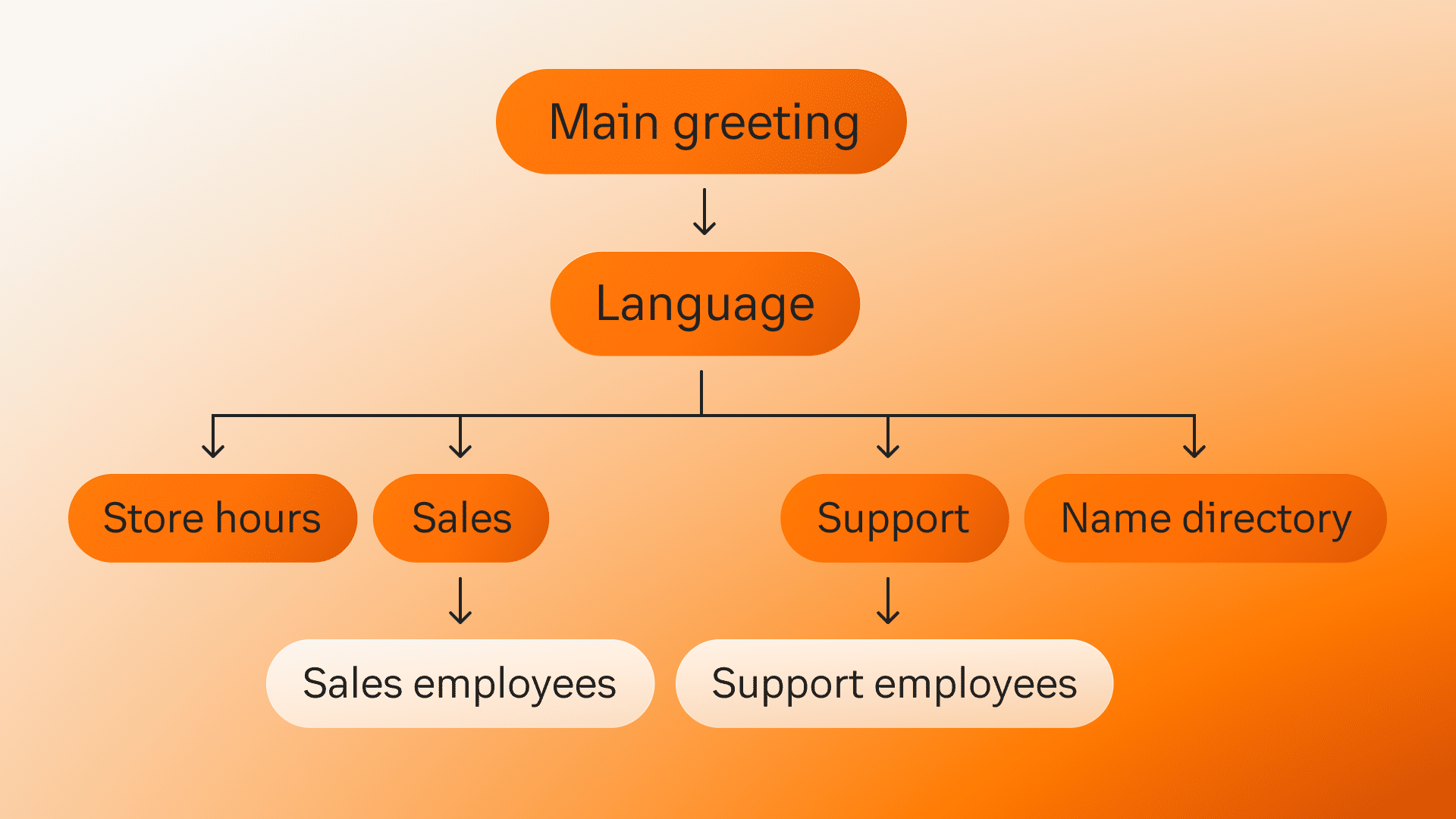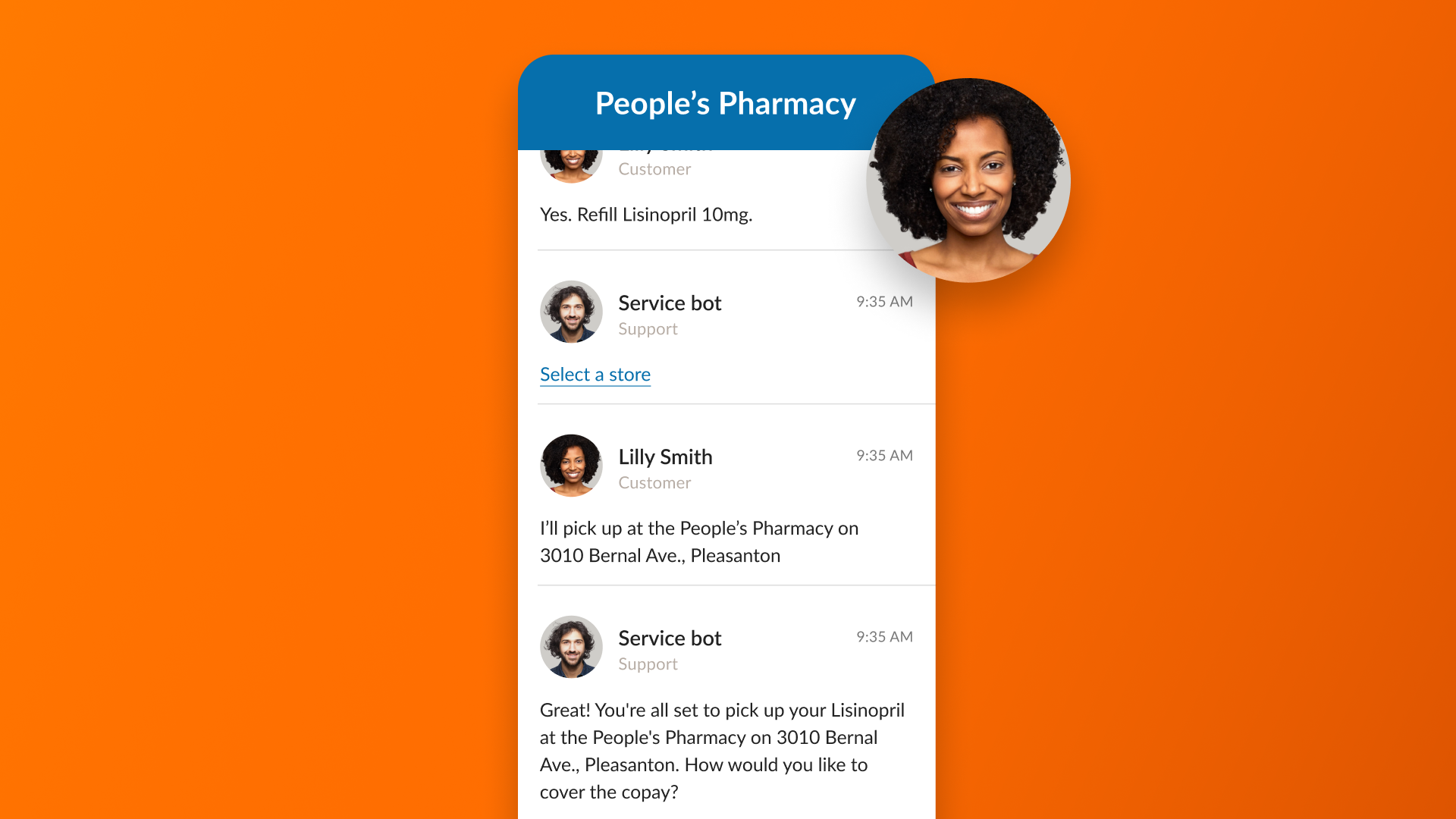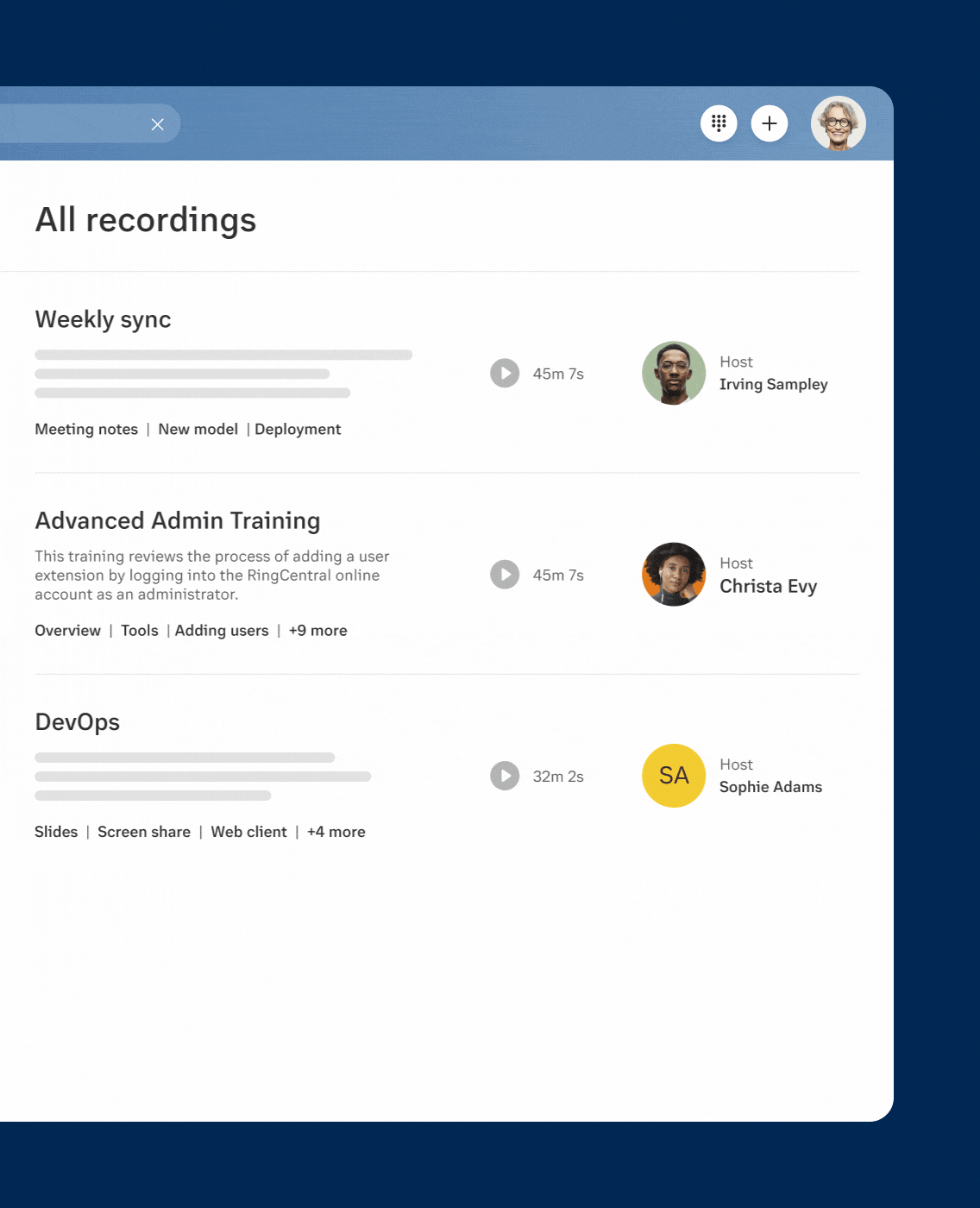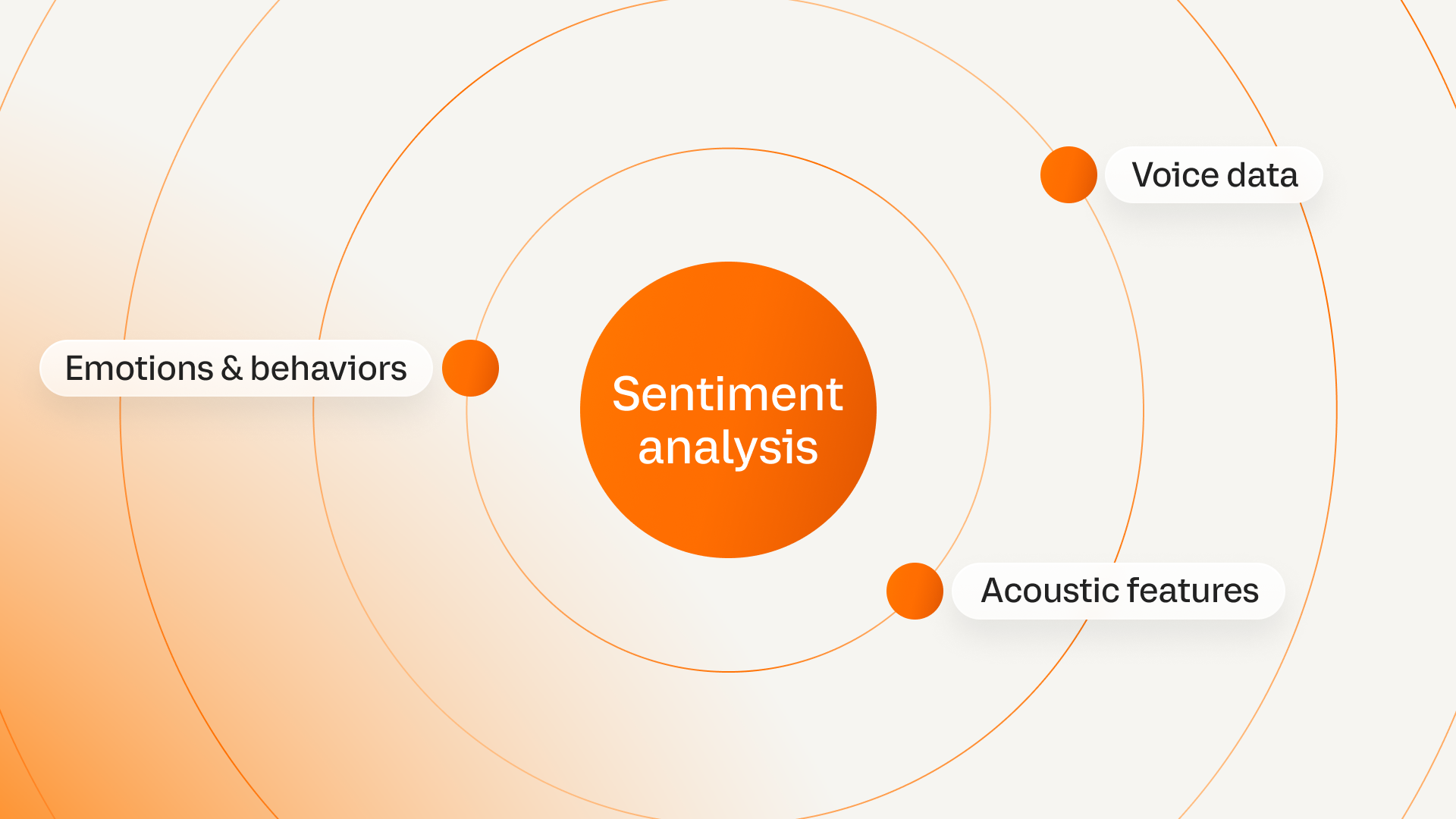AI is all the rage. But what are some examples of how you can use AI for customer service to transform your business?
Consumers are becoming more familiar with—and dependent on—apps and artificial intelligence (AI) tools to help them in their daily lives. According to The Insight Partners, the intelligent virtual assistant market will explode over the next few years, growing to just over $47.57 billion by 2028.
There are many ways in which AI solutions can improve your contact center as a service (CCaaS) tasks. We’re going to explore 10 specific use cases for customer service AI in your business. As well as that, we’ll get you caught up on everything else you need to know about artificial intelligence in customer service.
Let’s get into it:
- What is AI customer service?
- Key benefits of AI in customer service
- 10 ways to use AI in customer service
- Common challenges with AI customer support
- How to implement AI tools in your customer service
- What to consider when implementing AI-powered customer service
- The future of AI in customer service
What is AI in customer service?
Customer service AI is the use of artificial intelligence within a customer service space. The main way AI assists customer service is through the automation of manual processes; this includes advanced call routing, chatbots, and other forms of self-service. These automations free up your agents to work on more complex tasks which demand a human touch.
Conversational AI allows customers to interact with chatbots the way they would with a live service agent. Using machine learning, natural language processing (NLP), and natural language understanding (NLU), AI-enabled bots can serve as full omnichannel virtual agents. Conversation intelligence uses this technology to analyze conversations for emotion/sentiment, topics, accents, and more.
Gartner predicts that by 2026, conversational customer service AI will reduce contact agent labor and support center costs by $80 billion.

Key benefits of AI in customer service
By using AI for customer service operations, you can unlock transformative benefits, such as:
Greater productivity and efficiency
AI-powered contact center solutions offer a range of productivity-boosting automations. AI automates tasks like data entry, after-call work (ACW), call routing, and customer conversations, reducing the time it takes to answer support tickets and resolve customer issues.
For example, instead of relying on a human operator to manually direct incoming calls, AI leverages data to simultaneously route calls to the right agent. And, instead of having to respond to lots of simple requests, AI chatbots can handle them to lighten their workload.
Agents also don’t need to trawl through different systems to view customer data, as they can access entire customer profiles from a centralized system.
These features reduce call queues and wait times, minimize transfers, and increase productivity by giving agents more time to focus on providing attentive support to customers with complex needs.
Improved customer experience
AI systems improve customer experiences on multiple levels, from improving customer service speed and availability to personalizing experiences.
Speed and availability
AI customer service agents (such as chatbots) operate 24/7 and can handle limitless conversations simultaneously. This empowers them to deliver fast, convenient support across time zones and channels. 60% of customers say that using chatbots saves them time thanks to their round-the-clock availability. And 45% value the immediate response times of chatbots.
In turn, your human agents become more available. With reduced queues, agents can quickly respond to, and spend more time helping, customers who need complex assistance.
Even better, you can implement chatbots onto webpages to provide proactive support at friction points. This improves the flow of your customer journey, prevents churn, and boosts satisfaction.
Personalized customer support
AI can perform intricate data analysis to understand individual customer preferences, behaviors, and sentiments, enabling them to tailor in-chat experiences. The technology can also provide agents with the information they need to deliver empathetic, personalized service.
Sentiment analysis, for example, can use natural language understanding to infer positive or negative customer sentiments in real-time. Agents can be alerted to positive sentiments that indicate satisfaction or intent to buy, which they can use to tailor the interaction to meet specific needs.
In the case of negative sentiments, agents can use the info provided by AI to respond with the appropriate emotional reaction. This allows agents to reach customers on a more personal level and ensure that they feel heard and valued. You’ll soon see an improvement in CSAT and NPS scores.
Enhanced agent engagement
By eliminating time-consuming, tedious tasks from your agents’ workload, you empower them to engage with their roles more meaningfully.
Take ACW tasks, for example. AI can not only transcribe calls in real-time, but it can extract action items from them and create automatic summaries of conversations, reducing ACW and enhancing meaningful engagement.
More directly, AI removes the influx of repetitive customer questions from queues. So, agents can focus on handling more complex issues that provide more fulfillment, increasing agent satisfaction and engagement.
Reduced costs
AI analytics highlight areas of inefficiency in your contact center, such as long wait times and low first-call resolutions. With insight into these metrics, you can implement data-driven strategies to reduce the negative financial impact that these issues cause.
Predictive analytics can also predict call volumes using AI. So you can optimize staffing levels to prevent overstaffing and understaffing. Your labor costs are also directly reduced as, instead of hiring more employees, you can leverage AI chatbots, for example.
10 best practices for AI-powered customer service
The possibilities are endless when it comes to AI-driven customer service. But here are our top 10 examples of AI in customer service:
- Alleviate wait times with AI-powered self service
- Improve resolution time using AI-powered customer routing
- Analyze work volume for better scheduling
- Move to 24-hour customer service with chatbots
- Coach customer service agents via AI
- Get automated meeting and training summaries for agents
- Improve menu navigation for better customer experiences
- Get regulation-compliant, AI-generated scripts
- Find out how your customers really feel with sentiment analysis
- Go global with AI-powered translation, transcription, and more
1. Alleviate wait times with AI-powered self service
To achieve a great customer satisfaction score you need to deliver both efficiency and effectiveness. Customers expect immediate service and speedy resolutions to their support issues—the last thing they want is a long wait time to speak with a live agent. Our AI-enabled contact center software can move the customer support process along without delay.
Implementing AI in customer service management provides customers with a self-service option to find the information they need, using the communication channel of their choice.
Conversational AI-enabled virtual agents can serve as the first point of contact for customers who have an immediate need and reach out via your company’s website. These AI chatbots can also work proactively to take care of your customers’ needs or make a purchase without human agent interference.
Implementing conversational AI as the first point of contact for customers lets your agents focus on more complex customer questions and cases that can’t be resolved by self-service methods. Since routine tasks can be handled by virtual AI agents, complicated customer queries can get the dedicated attention they need from live support agents.
2. Improve resolution time AI-powered customer routing

Using AI tools and virtual agents as the first point of contact benefits customer service representatives just as much as customers.
Human agents are freed up to tackle more interesting, complex cases, and the repetitive tasks are taken off their workload.
If a customer can’t resolve their issue using self-service resources with a virtual agent, AI customer service solutions can deliver additional support to your contact center by intelligently routing the customer’s case to the best human agent for the task. When customer interactions are routed to live agents, AI equips the agents with:
- The customer’s name
- The customer’s profile
- The customer’s previous interaction history and messaging with your company
- A transcript of the conversation that just took place with the virtual agent—within the transcript, AI includes contextual information along with customer sentiment.
Once the customer interacts with a live agent, AI continues to assist by mining the conversation for keywords and phrases a customer speaks or types. AI customer service software then serves the agent relevant knowledge base articles and resources, providing real-time interaction guidance so your agent can best support your customer’s journey.
Conversational AI also boosts support teams’ productivity and efficiency by taking tasks off your customer service agents’ hands, leading to an enhanced employee experience. And when your agents are taken care of, they’ll take care of your customers in return.
3. Analyze work volume for better scheduling

“Many organizations are challenged by agent staff shortages and the need to curtail labor expenses, which can represent up to 95% of contact center costs.”
Daniel O’Connell, VP Analyst, Gartner
This might be one of the most hard-hitting examples of how using artificial intelligence in customer service can help your business. Labor can represent up to 95% of contact center costs, according to Gartner. In the current economic climate, conversational AI for customer service can help as it:
- Reduces the need for hiring with easy scalability: Virtual agents can easily be deployed during peak seasons with high traffic to help resolve customer issues without adding new employees. This can significantly lower costs.
- Increases productivity: Allows live employees to focus on higher-value activities and improve overall organizational productivity.
- Lowers training costs: Ongoing live guidance and customized behavioral coaching lowers coaching and training costs.
Hiring agents is a costly endeavor. According to Colin Taylor of The Taylor Reach Group, Inc., the average cost of hiring a new contact center agent is around $30,751 per employee.
However, each contact center operates differently, so this cost isn’t set in stone. To get an idea of what it may cost your support center, consider these expenses tied to hiring a new agent:
- Advertising and marketing for the position
- Screening and background checks
- Onboarding
- Training
- The time it takes for an agent to become proficient
- Hardware and call center software
- Physical office space (if applicable)
- Salary and benefits
The Gartner projection further explains how AI is changing customer service: “One in 10 agent interactions will be automated by 2026,” which is an increase from an estimated 1.6% of AI-based customer service interactions in 2022.
4. Move to 24-hour customer service with chat bots

Customer expectations have risen dramatically in recent years and the rules for customer engagement have changed. Conversational AI, especially leveraged via chatbots, can help address these changes in several ways:
- Improves brand loyalty: 86% of consumers said they would dump a brand they trusted after just two poor experiences. Conversational AI ensures fast, consistent, and smart self-service in the customer’s channel and language of choice.
- Provides smart self-serve options: Intelligent virtual assistants (IVAs) and outreach tools that can understand intent and respond to complex queries allow them to do so effectively across channels. What’s more, these sophisticated AI tools for customer service know what they don’t know and can cleverly route the interaction to the right agent with complete custom context, including sentiment when needed.
- Offers an “always-on” service: A reactive, company-centric model with service during “normal business hours” no longer cuts it. Customers demand 24/7/365, smart service that is proactive and customer-centric.
Happy customers stick around, and they tell their friends about positive experiences they’ve had with your company. Adding AI features to your customer service plan can have a real, positive impact on customer retention in an era when customers have more choice than ever. Pro tip: A Zendesk partner can provide tailored AI solutions, such as creating AI chatbots to enhance customer service experiences.
5. Coach customer service agents via AI

Another example of how AI can revolutionize your customer service team is through real-time coaching. Flexible work environments are now here to stay. Conversational AI provides time-saving and stress-busting tools to employees, irrespective of the work environment, in these ways:
- Reduces manual labor: Repetitive and time-consuming tasks such as filling out forms can now be automated to improve agent experience and productivity. This results in reduced churn and happier staff.
- Real-time guidance tools: It empowers employees with instant knowledge and soft-skill assistance, making interactions far less stressful.
Employee retention is inextricably linked to employee happiness. Incorporating AI into workflows could be a way to reduce the burden and keep your best team members for longer.
6. Get automated meeting and training summaries for agents

There is often so much ground to cover in meetings and training sessions with agents that it’s virtually impossible for reps to retain it all. You can make the content accessible on demand, but the time required for agents to review it is impractical during a typical day.
With top communications solutions, meetings are not only recorded and stored, but AI summarizes the meeting and provides a highlight version of the video. Agents can go through a one-hour session in a matter of minutes to reinforce key messages or training items.
7. Improve menu navigation for better customer experiences
The frustration of navigating through exhausting website or app navigation is one factor that deters customers from using self-service features. AI reduces or eliminates this barrier altogether.
With chatbots, customers can interact more conveniently and efficiently without clicking any buttons. This example of AI is often more inviting for customers using the self-service option.
8. Get regulation-compliant, AI-generated scripts
Regulations for contact centers continue to increase. Some of these requirements impact communication in any industry; others are industry-specific call standards. These regulations put more pressure on contact centers and service agents to ensure compliance.
Regulatory compliance isn’t just a legal issue; it is a customer service issue. Regulations protect consumers from unscrupulous practices. Compliance builds trust. Conversational AI dramatically improves your ability to minimize the risk of lawsuits and other penalties for non-compliance.
Conversational AI provides service reps with dynamic scripts that guide interactions while leaving room for flexibility. It also includes legal disclosure checklists, so agents know what to share with each customer on every call.
9. Find out how your customers really feel with sentiment analysis

Sentiment analysis is another hot example of how AI can proactively transform your customer service. Interpreting a customer’s emotions while a call is taking place is very challenging for service agents. This point is particularly true in a voice-only interaction.
Conversation intelligence leverages multi-modal emotion recognition to determine core emotions and sentiments from voice data. Cues, intensity, and the pitch of the customer’s voice all contribute to the AI assessment.
Greater insight into a customer’s sentiment offers tremendous value to agents trying to defuse tension and detect unspoken concerns.
10. Go global with AI-powered translation, transcription, and more

Supporting a global customer base is difficult for companies that don’t have enough multilingual personnel. Advanced AI supports agents and customers through speech recognition and accent detection.
In addition to basic language translation and transcription, AI converts audio into text with extreme accuracy. Reps can follow conversations with non-native English speakers much more effectively by using this tool when accents impede understanding through voice communication.
AI and customer service are a natural match. This type of global support for language transcription eliminates a lot of frustration for agents and reps by speeding up the communication process.
Common challenges with AI customer support
We’ve explored all the benefits of AI customer service tools, but are there any limitations you should know about?
Here are a few challenges you’ll need to overcome:
Resistance from agents
When you plan to implement an AI customer service platform, you may face some pushback from agents. Some may resist the change to their existing workflows, or lack confidence in using advanced technology. And they may also have concerns about being replaced by machines.
The solution to this is all about reassurance. Make sure your agents receive full training, and let them know that the aim is to complement their work by adding an extra layer of efficiency—it will make their jobs less tedious and free them up to work on more complex (and rewarding) interactions.
Resistance from customers
Your customers may also resist the introduction of AI tools, especially older customers who tend to distrust new technology. Many people prefer to speak to a human agent instead of using chatbots or IVR menus, particularly when it’s a complex query.
It’s essential that you give them the choice, including phone as an option, and making sure that AI tools can escalate interactions to a human when necessary. Be transparent about your use of customer data, and offer people the chance to opt out of call recordings or follow-up messages.
Security concerns
As well as customer concerns about what companies are doing with their personal information, data security is also a challenge with AI systems. If they’re not properly trained and maintained, AI-powered chatbots might accidentally expose confidential data. They could also be the target of cyberattacks.
You can mitigate these risks by picking a customer service platform with enterprise-grade security, and providing security training to everyone involved in using the AI tools.
Problems with accuracy
We’ve all heard the stories about bots such as ChatGPT coming up with inaccurate or biased responses. The thing to remember about AI tools is the language models are only as smart as the data they’re trained on.
If they can’t find the right answer from that data, they can only return the next-best response—which may be completely wrong.
AIs may seem almost human but they have a limited understanding of context, and lack empathy and emotional intelligence. They’re just not as intuitive as humans (which is why it makes sense to use them alongside, not instead of, human agents).
Fewer human interactions
Even though you’re keeping a human support team in place, the aim of using AI tools is to increase efficiency by letting them handle basic queries and repetitive tasks. With chatbots and IVR in place, fewer customers actually need to converse with a human to resolve their issue.
That’s great for productivity, but it does mean your team has fewer chances to interact closely with customers, which can lead to missed opportunities for gathering feedback. However, AI tools do help you to analyze sentiment and feedback about the support experience and the company in general.
How to implement AI tools in your customer service
While it’s tempting to jump on the latest trends, implementing AI tools overzealously—and without a clear strategy—puts your business at risk. You may end up overspending on tools you don’t need or dissatisfying your customers and employees.
To prevent these risks, follow these key best practices for implementing AI tools in customer service:
- Define business goals: What are your objectives for implementing AI? It’s crucial to make sure that the technologies you implement align with your key business goals. So, start by identifying the current inefficiencies in your contact center, such as high average handling times or long call queues, and focus your attention on the relevant AI solutions.
- Build customer trust: According to Salesforce, 43% of customers either completely or mostly distrust companies to use AI ethically. To build trust, be transparent from the earliest interaction about what data you collect using AI, as well as how and why it’s used by the system to improve customer experiences.
- Empower human agents with a hybrid model: AI is there to support your human agents, not replace them. Only use AI to handle simple queries and eliminate monotonous tasks. And, don’t forget to communicate the value of AI to wary employees.
- Provide sufficient training: Your customer service agents may have to navigate a significant learning curve whenever you implement a new AI tool. Make the process as easy as possible by training them on new systems.
What to consider when implementing AI-powered customer service
There’s a lot to think about when you introduce a new system or tool—here are a few considerations that should be top of your list:
Budget and resources
Think carefully about the features you need and what you can afford. As well as the price of the solution (and the maintenance if you own and develop the tool yourself), you’ll need to consider the costs of employee training and any downtime you might experience while implementing the system.
Luckily, there’s an affordable cloud-based contact center solution with built-in AI, in the shape of RingCentral RingCX.
Customer experience
Look at existing feedback and identify which aspects of the customer service experience could be improved through AI.
When you’re researching solutions, check the available features and prioritize those that will give customers a smoother journey. Take the tools for a ride with a free demo or trial—how well does the chatbot understand and respond to complex customer inquiries? What other AI capabilities does the platform have?
Time to value
As well as calculating the likely ROI (return on investment) of an AI customer care solution, it’s worth considering the time to value.
That’s the time it’ll take before the benefits start to kick in. It makes sense to choose a platform with easy setup and a shallow learning curve, to minimize any downtime or need for developers. Pick a solution that integrates seamlessly with your existing tools such as help desk software and CRM systems.
Training and monitoring
Even with a user-friendly platform, you’ll need to train your customer service agents on using the new features—otherwise you’ll lose those all-important productivity gains.
Make sure they’re aware of the tools’ limitations as well as its capabilities, so that they can look out for any anomalies. While autonomous AI will improve itself through self-learning, you still need to track its performance and accuracy.
Security and privacy
We already mentioned the importance of implementing a customer service AI platform that meets the highest standards of security and compliance. But you can also set your own standards by putting a clear AI policy in place for your organization.
Keep this updated and easily accessible, and consider any laws or regulations specific to your industry.
The future of AI in customer service
AI in customer service has far from hit its peak. As it grows more mature, it looks set to revolutionize customer service in new, exciting ways.
Gartner predicts that 80% of customer service teams will have applied generative AI technology by 2025. Conversational and generative AI is rapidly evolving to provide more personalized, human-like interactions and customer service proactivity.
This is projected to streamline contact center operations, boost agent productivity, and improve the overall quality of self-service support. With the ability to handle increasingly nuanced requests and help customers at critical friction points, customers can progressively trust in, and recognize, the value of AI.
With increased demand comes increased adoption. It’s likely, then, that Gartner is accurate in their prediction that one in 10 agent interactions will be automated by 2026.
AI’s analytical capabilities are also growing more intelligent. As we accumulate more and more data, AI will be able to make hyper-accurate predictions that empower businesses to optimize resources and meet customer needs.
Personalization, for example, may grow more accurate as AI uses intricate data analysis. That may allow more tailored product recommendations and personalized customer support suggestions in alignment with customer preferences and behavioral patterns.
And, with deeper insight into contact center operations, AI will be instrumental in uncovering hidden inefficiencies, leading to reduced costs and improved performance.
Simplify customer service with AI
Thanks to AI automations in RingCX, delivering top-notch customer service is easier than ever.
At RingCentral, we’re always working to streamline and evolve our products and services. Our goal is to provide your organization with the features and functionality you need to combat communication challenges and elevate both your customers’ and agents’ experience.
Start building better customer experiences today—explore RingCX and see what AI customer service can do for you.
AI customer service FAQs
How is AI used in customer service?
AI is used in many areas of customer service to improve the speed, availability, and personalization of support.
For example, it’s used in call centers and contact centers to intelligently route calls to the right agent, identify customer sentiments in real-time, automate agent workflows, analyze agent performance and efficiency, make predictions to guide optimization, and much more.
Which industries and businesses benefit most from AI customer service?
Any industry that receives incoming support requests from customers—whether it be via phone call, email, social media, or live chat—can benefit from using AI tools. AI is often leveraged in healthcare, ecommerce, and financial services.
It’s particularly useful for businesses that receive high volumes of incoming calls, as it’s a cost-effective alternative to hiring new staff. But any customer-centric company can utilize AI to provide smoother, more personalized experiences.
Will AI replace customer service agents?
In short, no. While AI is certainly intelligent, the belief that it will replace human agents is rooted in myth. Why? Because human agents possess the art of empathy, understand the subtle nuances of problem-solving, and can intuitively adapt to situations—all things that are totally lost on AI.
The relationship between AI and human agents is a complementary one. AI is there to shoulder and remove the inefficiencies that prevent agents from achieving peak productivity. Ultimately, it empowers agents to deliver the rich, empathetic experiences that foster emotional connections and enhance loyalty.
How can you use AI to better engage with customers?
AI can be used in a variety of ways to enrich customer engagement.
One example is through personalization. Thanks to AI analytics, agents can access comprehensive customer data—their preferences, purchase history, past interactions, and more—to tailor experiences to individual needs.
AI-powered chatbots also boost engagement by offering assistance around the clock — both responsively and proactively.
How is AI customer service different from chatbots?
Basic chatbots are rule-based, relying on keyword recognition to generate relevant responses to simple questions. The more advanced versions are powered by AI, using sentiment analysis and machine learning to handle complex queries.
However, when we talk about AI customer service, we mean more than just chatbots (though they are typically a part of it). AI-powered customer service also includes things like intelligent call routing, IVR menus and auto-attendants, live coaching, automatic transcription, and analysis for workforce management.
Can you trust AI customer service platforms with your data?
That depends on the platform, but if you choose a reputable provider then you should be confident that they’ve put the right security protocols in place. When you’re researching vendors, look for things like end-to-end encryption and multi-factor authentication, as well as transparency around the use of AI tools.
With RingCentral, you can opt in or out of the AI features for extra privacy—for example, if you enable recording or transcription of a call, all participants will receive a notification so they can choose whether to continue.
How much does AI customer service cost?
Again, it depends! If you decide to build your own AI solution, you can expect it to be pretty expensive. But if you choose a customer service platform with built-in AI capabilities and easy implementation, you won’t require developers or even a dedicated IT team.
With a cloud-based solution, you don’t need to pay for equipment on-site, nor maintenance of the infrastructure. You can choose the pricing that suits your budget and upgrade your plan as and when you need to.
Originally published Jul 08, 2024, updated Nov 12, 2024





